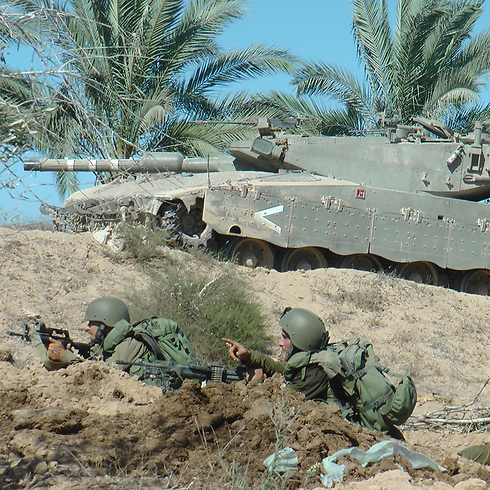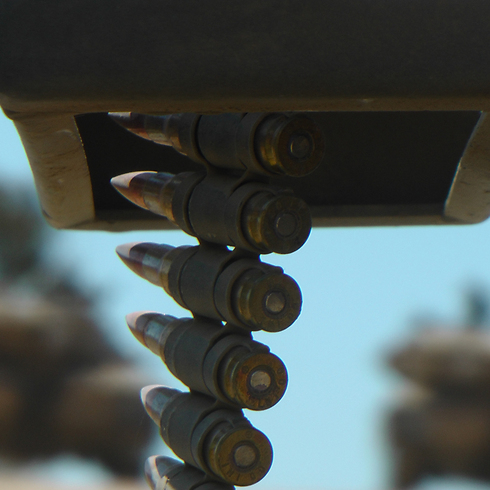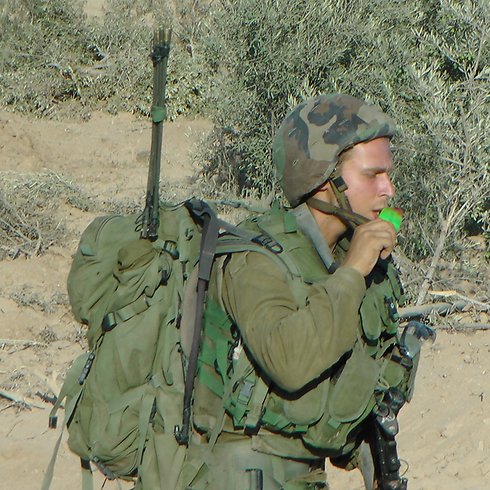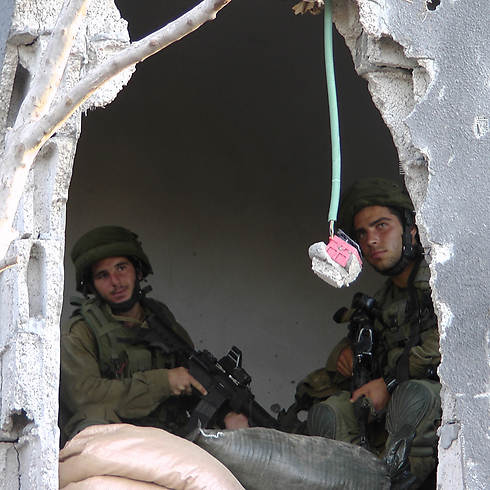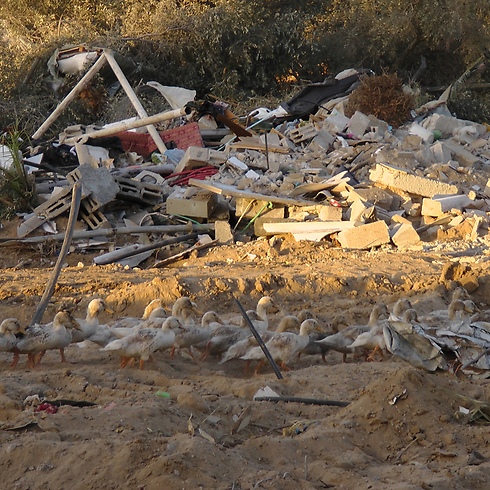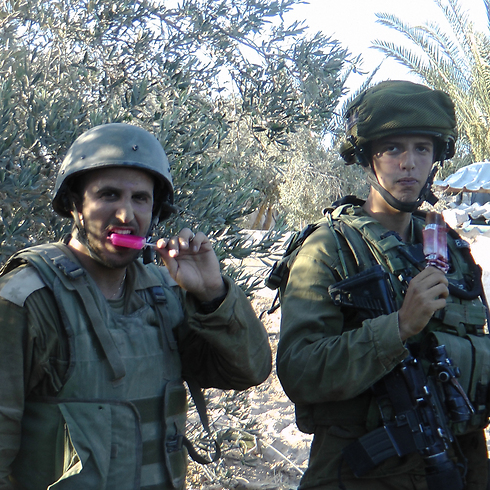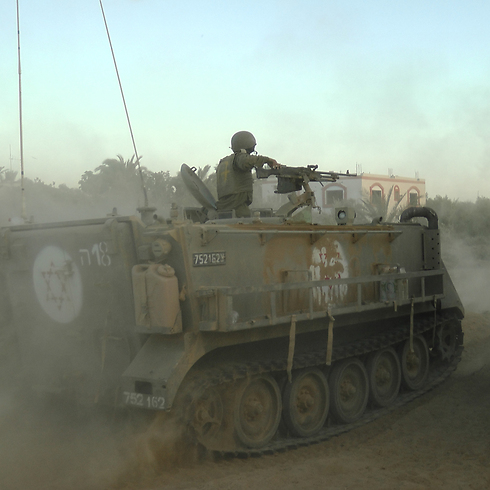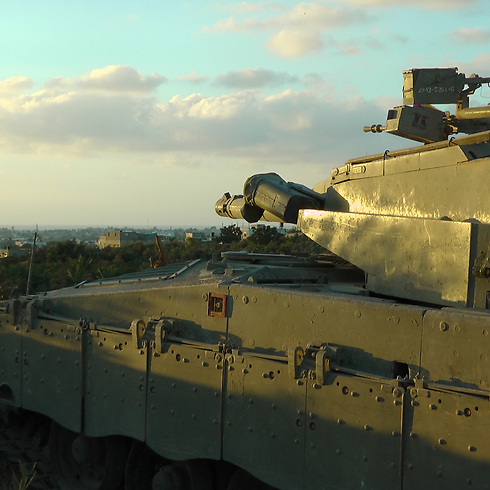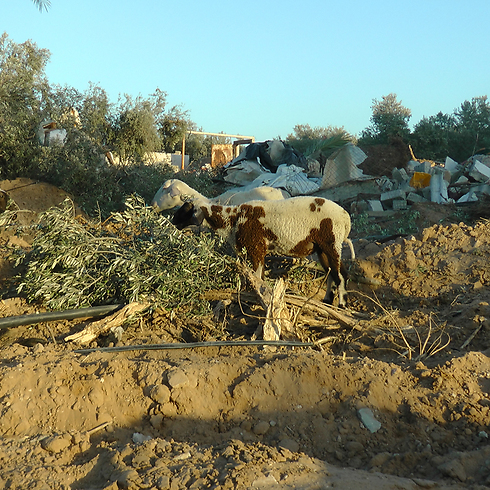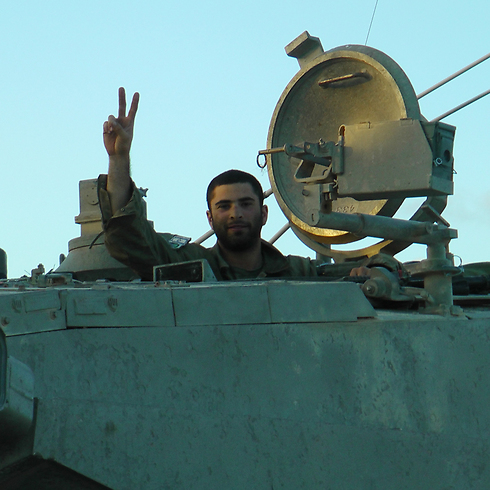
A journey through a ghost Hamas neighborhood
Ynet correspondent Yoav Zitun joins Maglan fighters as they enter Gaza in a heavy armored personnel carrier.
Destruction in every corner, crumbled roads, Kalashnikov rifles, flak jackets and rifle magazines, and one huge tunnel with a sooty opening at the center of a date harvest, which has been completely razed by the Engineering Corps' bulldozers.
The battles over the Hamas neighborhood, which touches on an Israeli kibbutz, were conducted by Maglan fighters. Apart from a few teams tasked with classified missions in other areas, the unit sent all its fighters, including reserve forces, to the Gaza Strip. So far, they have killed more than 40 terrorists in this operation. The elite unit is becoming the spearhead against terror.
We enter the Achzarit in one of the forming-up places, escorted by young soldiers from the Paratroopers Brigade who have yet to complete a full course. "We won't give up on such operational experience in the midst of their training as fighters," their commander tells us.
The drive in the Achzarit heavy APC, an outdated armored monster which was born as a Merkava tank with barrel-less turret, is slow, dusty and extremely hot. When I was a soldier in compulsory service, the ventilator bellows were still working, slightly cooling the ride. This time they mainly scatter hot dust.
The wafer and Bamba bags are lying on the floor in the armored vehicle's fighters cells, and combined with the childish jokes shared by the young soldier, there is a surreal feeling of a 12th grade annual school trip. That's what the war look like too.
Every few minutes, the force's commander at the top of the APC takes off his protective eyewear and removes another layer of the powder dust piling up from our convoy's ride, which also includes tanks.
The fence is crossed as quickly as possible with a vehicle which barely reaches 30 kilometer an hour. A deserted Palestinian dog emerges from a path leading to a nice house and is the first to greet us. He doesn't bark, unlike the packs of dogs that usually wake up the village every time soldiers enter.
Camouflaging between lemon trees
A smell of burned garbage comes up from every corner. I search for a sign of some kind of life in the Palestinian community, and fail to find one. Every second house in the eastern margins of the neighborhood is crushed, pierced with bullets.
And then, within less than 10 minutes, one of the convoy's armored vehicles collapses due to a technical malfunction. The soldiers jump out, fearing that the fatal antitank fire, which killed seven Golani fighters early last week as they got stuck with their APC in Saja'iyya, would repeat itself.
The fighters seize controlling posts around the area, and wait for about two hours for the armored vehicles to be fixed. Some of them camouflage themselves between lemon trees, lying in ambush for terrorists who may be lying in wait for them.
They all walk around in pairs, looking at each other as often as they look as the Palestinian houses around them. No one wants to turn into a "second Gilad Shalit."
Corporal Yaari of Ashkelon thinks about the girlfriend he left at home, in a city which has been heavily hit by rockets for two and a half weeks now. "I don't have a phone here to receive updated, but they are taking care of themselves and they have a safe area against the rockets," he says.
We take advantage of the break to enter a partially dismantled house where a reserve engineering unit is operating, blowing up another tunnel shaft coming out of the bedroom. In the adjacent yard, hens jump around between the soldiers who are resting and munching on Oreo cookies.
Inside the house, dozens of kilograms of explosives are placed inside the shaft. In the kitchen there are plates and cups in the sink with a smell of seasoned food, evidence of the life conducted here up to a few days ago. Terrorists and children under one roof.
After the malfunction is fixed, we continue our ride in the ghost neighborhood: Bombed houses, no sign of life apart from cats between the ruins, seep and different kinds of poultry left behind. One of the kittens has already been adopted by an engineering soldier.
Dozens of sacks of food from an international aid organization pour out, unused, near a building where one of the shafts was discovered.
'Hamas is imitating Hezbollah'
We reach the Maglan commander, Lieutenant Colonel Y. He is already informed about the secret raids his soldiers are about to conduct that night, bringing more intelligence, locating more tunnels (before the temporary ceasefire which had yet to be declared then).
"Only a few hours ago we arrived at a suspicious building. There were shooting posts there with many cigarette stubs, thrown cell phones, tossed flak jackets and weapons with a bullet in the barrel, pointing to the terrorists' escape," he says. "There are amounts of weapons and explosive devices here which we did not see in southern Lebanon. Hamas is imitating Hezbollah."
The unit's commander is in good spirits, especially when the headquarters' company commander comes out of nowhere with popsicles. While taking a break from the battles, the fighters get sweet refreshments between the canned tuna fish of the battle rations and the sausages.
On the top of the hill, near the mosque, the Palestinian Authority flag – rather than the Hamas flag in its stronghold – waves in the evening breeze. The pleasant wind is also felt on the soldiers' faces as they prepare for another night of fighting. The alert level grows after the sun disappears in the sea. The soldiers don't even go alone to defecate.
I prepare to go back into Israel as part of an armored logistic convoy, hoping to make it in time for the family Shabbat meal in the shadow of the rockets. But the armored vehicles have different plans, and some of the pegs come out of the APC's track.
The night is already here, and the Gaza City lights flicker from the slope of the hill. It feels like an endless battle.










